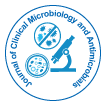

Opinion Article - (2023)Volume 7, Issue 1
Sexually Transmitted Infections (STIs) are a significant public health concern globally, affecting millions of people annually. Neisseria gonorrhoeae, the causative agent of gonorrhea, is one of the most prevalent STIs worldwide. It is a highly adaptable bacterium that has developed resistance to various antimicrobial agents over the years. The emergence and spread of Anti- Microbial Resistance (AMR) in N. gonorrhoeae have led to limited treatment options, with few remaining options available. The use of post-exposure prophylaxis with doxycycline (doxyPEP) has been recommended to reduce bacterial STIs. However, the preexisting tetracycline resistance in N. gonorrhoeae limits the effectiveness of doxyPEP against gonorrhoea. Additionally, the use of doxyPEP may select for tetracycline-resistant and multidrug resistant strains of N. gonorrhoeae, further limiting treatment options. The short-term effects of doxyPEP on N. gonorrhoeae antimicrobial resistance using genomic and antimicrobial susceptibility data from clinical isolates of N. gonorrhoeae.
The Effect of doxyPEP on Antimicrobial Resistance is that the tetracycline resistance is prevalent in N. gonorrhoeae, and this preexisting resistance affects the efficacy of doxyPEP against gonorrhoea. DoxyPEP is more effective against syphilis and chlamydia than gonorrhoea due to this resistance. Moreover, the use of doxyPEP may select for tetracycline-resistant and multidrug resistant strains of N. gonorrhoeae, further limiting treatment options.
To evaluate the short-term effects of doxyPEP on N. gonorrhoeae antimicrobial resistance, genomic and antimicrobial susceptibility data from clinical isolates of N. gonorrhoeae were used. The study found that the strength of selection affected the plasmid-encoded and chromosomally-encoded tetracycline resistance in N. gonorrhoeae. Isolates with high levels of plasmid-encoded resistance had lower Minimum Inhibitory Concentrations (MICs) for other antimicrobials than isolates with low levels of tetracycline resistance. Therefore, the degree of selection for tetracycline resistance affects the short-term effects of doxyPEP on N. gonorrhoeae antimicrobial resistance and circulating lineages. The use of doxyPEP has the potential to induce resistance to other antimicrobials if it selects for all tetracycline-resistant lineages. However, if doxyPEP usage mostly favors lineages with tet-mediated resistance, there would be a brief drop in resistance to other antimicrobials since these lineages have comparatively less co-resistance. To differentiate between these outcomes, prompt genomic surveillance with a focus on doxyPEP users is necessary.
Global and locally obtained N. gonorrhoeae isolates were categorized as susceptible, intermediate, resistant, or high-level resistance. Susceptible, intermediate, and resistant/nonsusceptible were indicated by background shading. The distribution of tetracycline-resistant N. gonorrhoeae isolates throughout Health and Human Services (HHS) areas varied, and their genetic makeup was not uniform. Moreover, resistance mechanisms differed, and high-level resistance was not spread uniformly across.
Finally, this article discusses the challenges posed by Neisseria gonorrhoeae, the causative agent of gonorrhoea, which is highly adaptable and has developed resistance to various antimicrobial agents, including the commonly used doxycycline, highlights that the pre-existing tetracycline resistance in N. gonorrhoeae limits the effectiveness of doxyPEP against gonorrhoea, and its use may select for tetracycline-resistant and multi-drug resistant strains, further limiting treatment options. It suggests that the short-term effects of doxyPEP on N. gonorrhoeae antimicrobial resistance depend on the strength of selection for tetracycline resistance, and prompt genomic surveillance is necessary to differentiate between outcomes, also notes that the distribution of tetracycline-resistant N. gonorrhoeae isolates throughout Health and Human Services (HHS) areas varies, and their genetic makeup and resistance mechanisms differ, highlighting the need for a tailored approach to manage antimicrobial resistance in N. gonorrhoeae. Overall, underscores the urgent need for innovative approaches to tackle the global public health challenge posed by antimicrobial resistance in N. gonorrhoeae.
Citation: Nicole G (2023) Insights into Antimicrobial Resistance and Genomic Surveillance of doxyPEP usage inN. gonorrhoeae. J Clin Microbiol Antimicrob. 7:144.
Received: 27-Feb-2023, Manuscript No. JCMA-23-22419; Editor assigned: 01-Mar-2023, Pre QC No. JCMA-23-22419 (PQ); Reviewed: 15-Mar-2023, QC No. JCMA-23-22419; Revised: 22-Mar-2023, Manuscript No. JCMA-23-22419 (R); Published: 30-Mar-2023 , DOI: 10.35248/jcma.23.7.144
Copyright: © 2023 Nicole G. This is an open-access article distributed under the terms of the Creative Commons Attribution License, which permits unrestricted use, distribution, and reproduction in any medium, provided the original author and source are credited